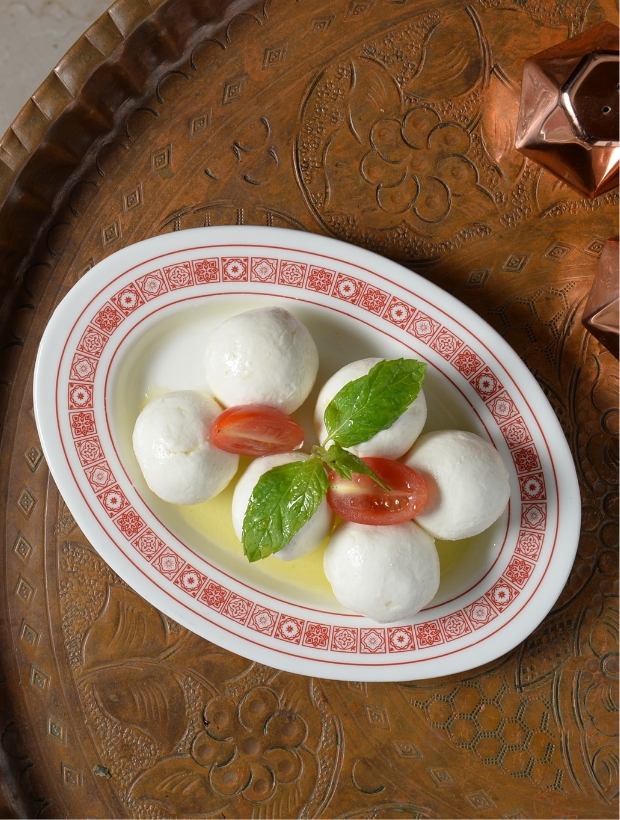(Initially known as Gerasa (Γερασα) during the early Greek periods, Jerash derived its name from its Semitic counterpart. It later came to be called Antioch on the Gold River (Ἀντιοχέων πρός τῷ τῶν Χρυσορόᾳ) due to the river that flowed through its center. This appellation was attributed to Antiochus, possibly Antiochus the Fourth, a Seleucid king from the early fourth century BC. This designation persisted until the onset of the Roman era, after which the original name Gerasa was reinstated, following Emperor Hadrian's visit to Jerash in 129 AD. Concurrently, the Nabataeans referred to Jerash as "Jersho," culminating with "waw," an indicative term in the active or nominative case. Throughout the epochs of Arab and Islamic governance, Jerash was bestowed with various names, including Korat Jerash, Jerash, Mount Jerash, and Jerash Province. Under Ottoman rule, it bore two designations: "Jabal al-Sawait," encompassing surrounding villages in the northern and eastern sectors, and "Mount Al-Maarad," covering the city of Jerash and its northwestern outskirts. In the waning days of Ottoman influence, it became known as Jerash District, a title that endured until the establishment of the modern Hashemite state).
Located in the north of Jordan, Jerash is a short drive from Amman that takes you to one of the most well-preserved sites of Greek and Roman architecture in the world nested in the heart of the urban city. Dating back to Neolithic times, and flourished under Roman rule, you can relive the past with walks through the colonnaded streets, public squares and plazas, temples and theaters, all key features of the Roman and Byzantine empires. These ruins showcase the aesthetic and artistic values of the monuments and architecture, with many fine details reflecting the various architectural styles of the various ruling empires.
In the year 636, the Islamic conquest of the regions of Jordan, including Jerash, was easy and smooth. During the Umayyad period, Jerash witnessed great prosperity, but declined during the Abbasid period.
After the devastating earthquake of 749, the city was abandoned. However, life began to return from the beginning of the 12 Century, and the modern city began to form at the beginning of the 19th Century.

Visitors can visit family homes to experience daily life in Jerash and partake in home-based experiences such as picking fruits or olives, making jams and pickles, collecting honey, preparing the local spiced tea or acorn-based coffee (a local and secret recipe) and learn how to prepare local unique dishes with their hosts. And not to forget, Jerash is famous for its high-quality dairy products which are a result of the fertile mountains and valleys, ample rain and grazing land that create ideal conditions for local sheep and goats to produce the freshest milk for locally made yoghurts and cheeses.

“Labaneh Jarashiyeh”, a kind of strained yoghurt, is the most famous product from Jerash which is still produced using the traditional goatskin bag to strain the milk and is proudly served in restaurants and homes in Jerash and Jordan.
Jerash is blessed with fertile land overflowing with an abundance of fresh fruit farms, olive groves and dairy farms around the city walls, all supplying into the local food experience. When in the city, visitors will not go hungry with an abundance of food choices, from home-cooked local dishes such as Maklouba, Mansaf, Makmoura, and savory Imtabaqa that give you a taste of the local gastronomy along with the numerous restaurants that offer Levantine cuisine.
Beyond the historical ruins of Jerash, the city is blessed with the backdrop of the Jordanian Highlands or mountainous areas. Dibeen Forest Reserve, located south of the Roman ruins, is 8.5km of protected land that is one of the last Pine-Oak forests in the Middle East and home to 17 endangered species offering beautiful scenic views and unparallel hikes and adventure experiences. The establishment of the reserve has aided conservation of this unique local biodiversity while allowing local communities to make sustainable alternative economic choices.

Jerash is also home to the Jerash Festival for Culture and Arts which was founded in 1981. The ruins continue the tradition of hosting a variety of local, regional and international cultural activities and performances that grace the ancient stages and theaters attended by guests from all over the world. A major must-attend on the cultural calendar, the ruins and city come alive every summer in July featuring poetry, music, dance and theater performances that appeal to a variety of audiences, highlighting the grandeur of the ruins.

Celebrating Culture, Heritage, and Art
Your visit to Jerash should include a stop at the Jerash Visitors Center, located within the Jerash Archaeological site. As your starting point, the center shares resources to enhance your visit to Jerash, and features a small museum with recently discovered historical ruins that will set the context and explain the history of the ruins and the city.